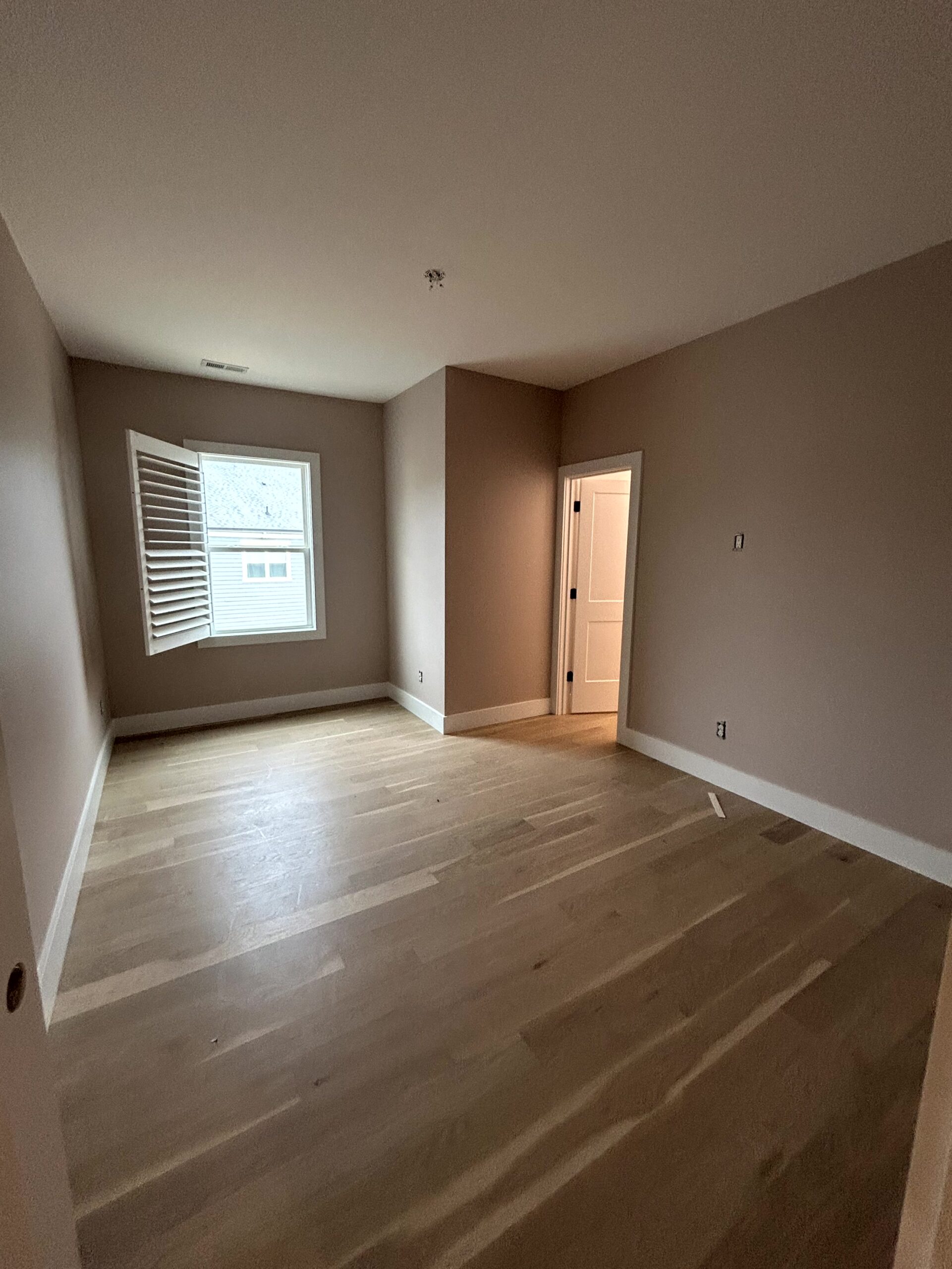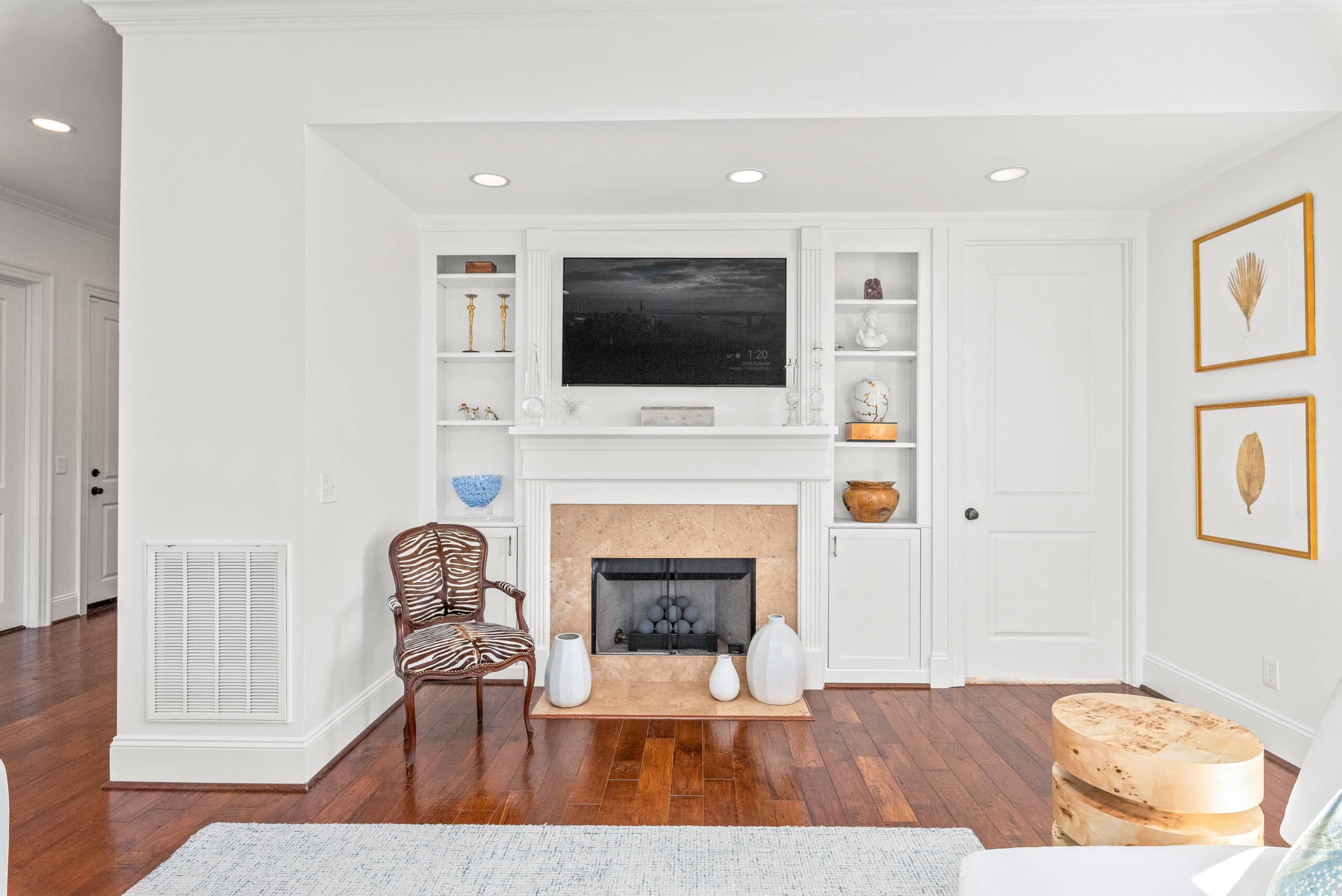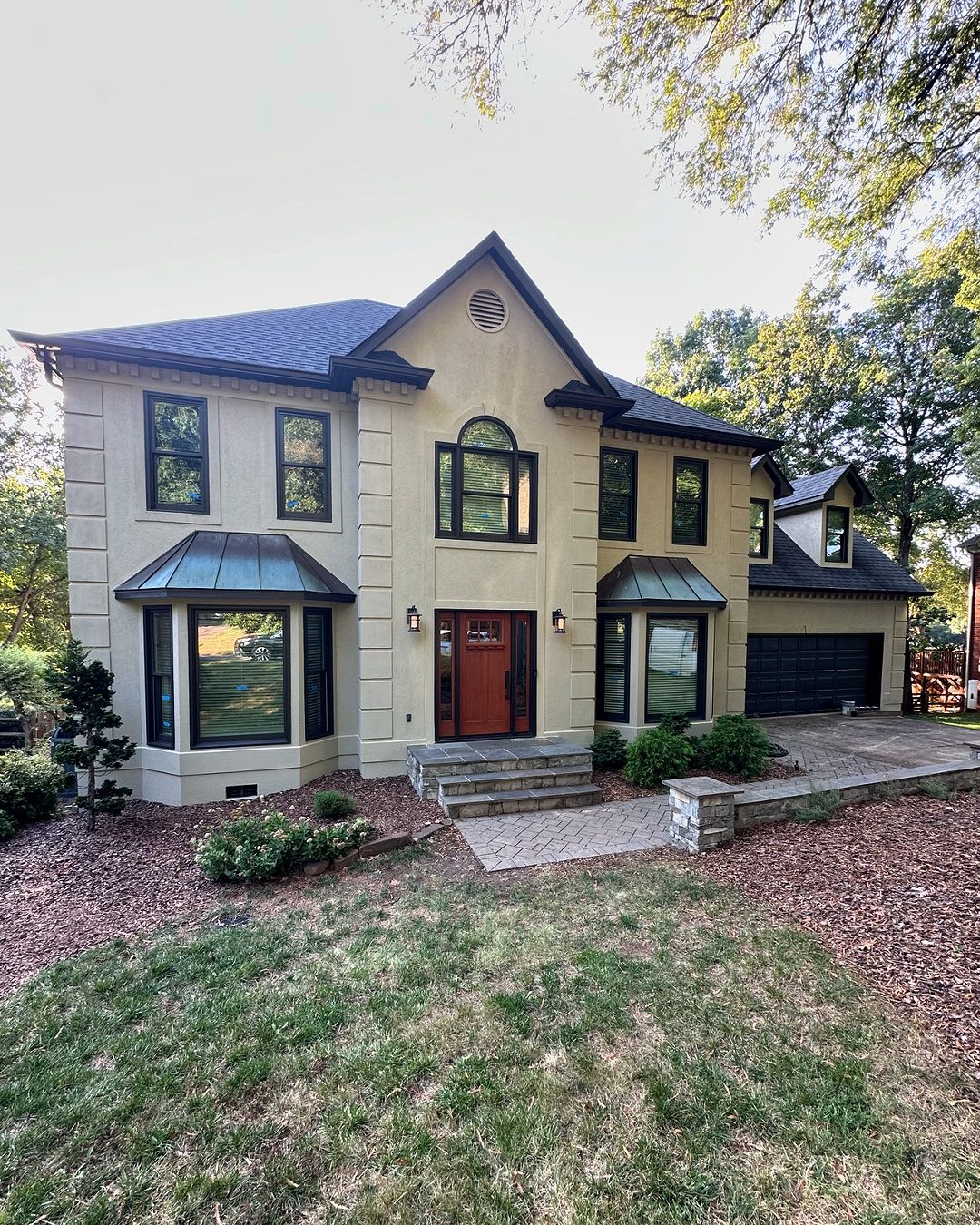“Does spraying or rolling paint deliver a better finish and longer-lasting results?”
The answer isn’t one-size-fits-all. Both spraying and rolling have strengths and weaknesses. Spraying often creates a flawless, factory-smooth look ideal for large walls, cabinets, or furniture. Rolling, on the other hand, provides more control, uses less paint, and is often preferred for textured surfaces or smaller spaces.
Your choice matters. Not only does it influence how the walls look today, but it also affects how long the paint lasts, how much maintenance will be needed, and even the overall cost of your project.
In this blog, we’ll cover:
-
How finish quality differs between spray and roll methods
-
Which approach provides better longevity and durability
-
The true cost of labor, equipment, and materials
-
Service-specific prep and product recommendations
-
Practical insights for homeowners deciding between spraying and rolling
By the end, you’ll have a clear understanding of which method is right for your project — whether you’re painting a single bedroom wall or the entire interior of a home.
Understanding Spray Painting vs. Rolling

Spray Painting Basics
Spray painting uses airless sprayers or HVLP (High Volume Low Pressure) sprayers. Paint is atomized and applied in a fine mist, which creates a very even coat.
Spraying excels on:
-
Smooth walls and ceilings
-
Cabinetry and furniture
-
Large, open areas where speed is essential
Advantages: It’s fast, provides excellent coverage, and produces a smooth finish free of brush strokes or roller marks. Sprayers can also reach tight corners and edges with ease.
Disadvantages: Sprayers require significant preparation. Every surface not being painted must be masked and covered to avoid overspray. The equipment itself is expensive to purchase or rent, and improper use can lead to drips or uneven application.
Rolling Basics
Rolling relies on paint rollers of varying nap lengths (shorter nap for smooth walls, thicker nap for textured surfaces). Rollers are often paired with brushes for corners and trim.
Rolling excels on:
-
Drywall and textured walls
-
Ceilings
-
Small or medium rooms
Advantages: Rollers are inexpensive, easy to use, and require minimal prep compared to spraying. Overspray is not a concern, and touch-ups are simple.
Disadvantages: It’s slower than spraying on large surfaces. Rollers can leave faint texture patterns or lap marks if not applied evenly.
Surface and Paint Type Suitability
Choosing between spraying and rolling begins with the surface itself. The wrong application method can result in wasted paint, poor adhesion, or finishes that wear prematurely.
Which Surfaces Benefit from Spraying
Spray painting is ideal for smooth, large, or detailed surfaces where consistency is essential. Examples include:
-
Exterior siding and fences
-
Doors and trim
-
Cabinets and furniture
-
Interior walls where a glass-like finish is desired
Spraying works especially well with high-end paints like Benjamin Moore Advance or Sherwin-Williams ProClassic, which are formulated to level out and create smooth surfaces.
Which Surfaces Benefit from Rolling
Rolling remains the go-to method for:
-
Drywall and ceilings (especially in residential interiors)
-
Textured walls such as orange peel or knockdown finishes
-
Small rooms where masking would take longer than rolling
-
Budget-friendly projects, where paint efficiency matters more than ultra-smooth finish
Budget paints, particularly those with lower solids content, often perform better when rolled. They require heavier coverage, which rollers can apply more efficiently than a fine spray mist.
Product Recommendations by Application
| Application Area | Best Product Type | Recommended Tools |
|---|---|---|
| Cabinets & Trim | Benjamin Moore Advance, Sherwin-Williams ProClassic | HVLP sprayer |
| Interior Walls (smooth) | Sherwin-Williams Duration Home, Behr Marquee | 3/8” nap microfiber roller |
| Textured Walls & Ceilings | PPG UltraHide, Benjamin Moore Regal Select | 1/2”–3/4” nap roller |
| Exterior Siding | Sherwin-Williams SuperPaint, Benjamin Moore Aura | Airless sprayer |
Finish Quality: Smoothness, Consistency, and Texture

Finish quality is often the deciding factor for homeowners. Does the wall look sleek and uniform, or can you spot texture differences under certain lighting?
Spray Application Results
Spraying creates a factory-smooth finish that’s nearly impossible to replicate with a roller. No brush strokes, no roller marks — just uniform coverage. This is why spraying is standard in cabinet refinishing, new construction, and commercial spaces.
High-gloss and semi-gloss paints especially benefit from spraying. They reflect light beautifully when evenly applied but can highlight imperfections if rolled poorly.
The challenge? Spraying requires skill. Move too slowly, and you’ll get drips. Move too fast, and the coverage will look thin or patchy.
Roller Application Results
Rolling leaves behind a slight texture, even with microfiber rollers. For some homeowners, this is a drawback. For others, it’s a plus. A bit of texture can hide minor imperfections in drywall or add warmth to a wall’s appearance.
Rolling allows greater control in corners, around trim, and on smaller walls. However, it often takes 2–3 coats to match the smoothness a sprayer can achieve in 1–2.
Service-Specific Examples
-
Cabinet Refinishing: A professional spray finish typically achieves a factory-level smoothness with just two coats. Rolling or brushing cabinets, even with premium enamel paints, may leave visible strokes.
-
Interior Living Room Walls: Rolled finishes often need two coats for even coverage. Minor roller texture may remain visible in strong lighting.
-
Exterior Projects: Both methods can succeed. Spraying is faster and produces even coats, while rolling helps force paint into textured siding for better adhesion.
Longevity and Durability
How long the paint job lasts depends on more than the tool. Preparation, paint quality, and application technique all play critical roles.
Factors Affecting Longevity
-
Surface Prep: Cleaning, sanding, and priming create a foundation for long-lasting paint. Skipping prep is the #1 cause of early failure.
-
Paint Quality: Premium paints contain higher levels of solids and binders, making them more durable and resistant to fading or peeling.
-
Application Technique: Thin, even coats (spray) versus thicker, more textured coats (roll) each influence durability differently.
Spray vs. Roll Durability Insights
Both methods can be equally durable when applied correctly.
-
Spraying: Creates thin, even layers that bond well and resist cracking. Especially useful for smooth surfaces like cabinets or trim.
-
Rolling: Applies slightly thicker coats, which can be beneficial on textured walls but may require more frequent touch-ups.
Product-Specific Longevity Tips
-
Exterior Acrylics like Sherwin-Williams Duration or Benjamin Moore Aura last 8–12 years regardless of method, provided the prep is thorough.
-
Interior High-Solids Paints (such as Benjamin Moore Regal Select) maintain their sheen longer when sprayed on smooth walls.
-
Ceiling Paints often perform better when rolled, as spraying can leave uneven lap marks in overhead lighting.
Efficiency and Coverage: Time, Labor, and Materials
Time is money — whether you’re a professional crew or a DIY homeowner.
Spray Painting Efficiency
Sprayers can cover 400–500 sq. ft. per hour, making them invaluable for large projects. However, extensive masking and cleanup may offset time saved during application. Professionals often prefer spraying for new builds, exteriors, and multi-room jobs.
Roller Painting Efficiency
Rollers cover 150–250 sq. ft. per hour, slower than spraying. But the reduced masking time, easier cleanup, and lower paint waste make rollers efficient for small-scale or DIY projects.
Cost Comparison Table
| Factor | Spray Painting | Rolling |
|---|---|---|
| Labor Time | Faster for large surfaces | Slower |
| Prep & Masking | Extensive | Minimal |
| Equipment Cost | High (sprayer purchase/rental) | Low (rollers/brushes) |
| Paint Waste | Higher (overspray) | Lower |
| Finish Quality | Ultra-smooth, professional | Slight texture |
Common Concerns and Solutions
Overspray and Mess
Spraying requires drop cloths, masking tape, and protective sheeting for every nearby surface. Rolling produces little to no overspray.
Skill Requirements
Spray painting has a learning curve. Runs, drips, or uneven coverage are common for beginners. Rolling is more forgiving, though poor technique can still lead to lap marks or uneven texture.
Maintenance and Touch-Ups
Sprayed finishes are harder to touch up seamlessly, as new spray doesn’t always blend with existing layers. Rolled finishes, however, can be touched up with ease, making them ideal for high-traffic areas.
People Also Ask
Q: Does spray painting give a better finish than rolling?
Yes, on smooth, uniform surfaces. Rolling can still deliver excellent results, especially on textured walls.
Q: Which method lasts longer, spray or roll?
Both last equally long when prep and paint quality are done right.
Q: Is spray painting more expensive than rolling?
Upfront costs are higher, but labor savings can balance expenses on large jobs.
Q: Can I use premium paint with a roller?
Absolutely. Premium paint works well with either method, though rolling may need more coats.
Q: Is spraying suitable for DIY projects?
Yes, but it requires practice and thorough masking. Rolling is usually more beginner-friendly.
Choosing the Right Method for Your Project

Spray and roll painting both have their place.
-
Spraying is best for large, smooth surfaces, cabinetry, and projects where a professional, ultra-smooth finish is the goal.
-
Rolling is best for smaller areas, textured walls, budget-conscious projects, and homeowners who want easier touch-ups.
In the end, both methods deliver long-lasting, durable finishes — provided you pair them with proper surface prep and premium paints.
Homeowners should evaluate surface type, project size, budget, and desired finish before deciding. Sometimes, the best solution is a combination of both: spray large areas for speed, then roll for coverage on textured walls or tight spaces.




